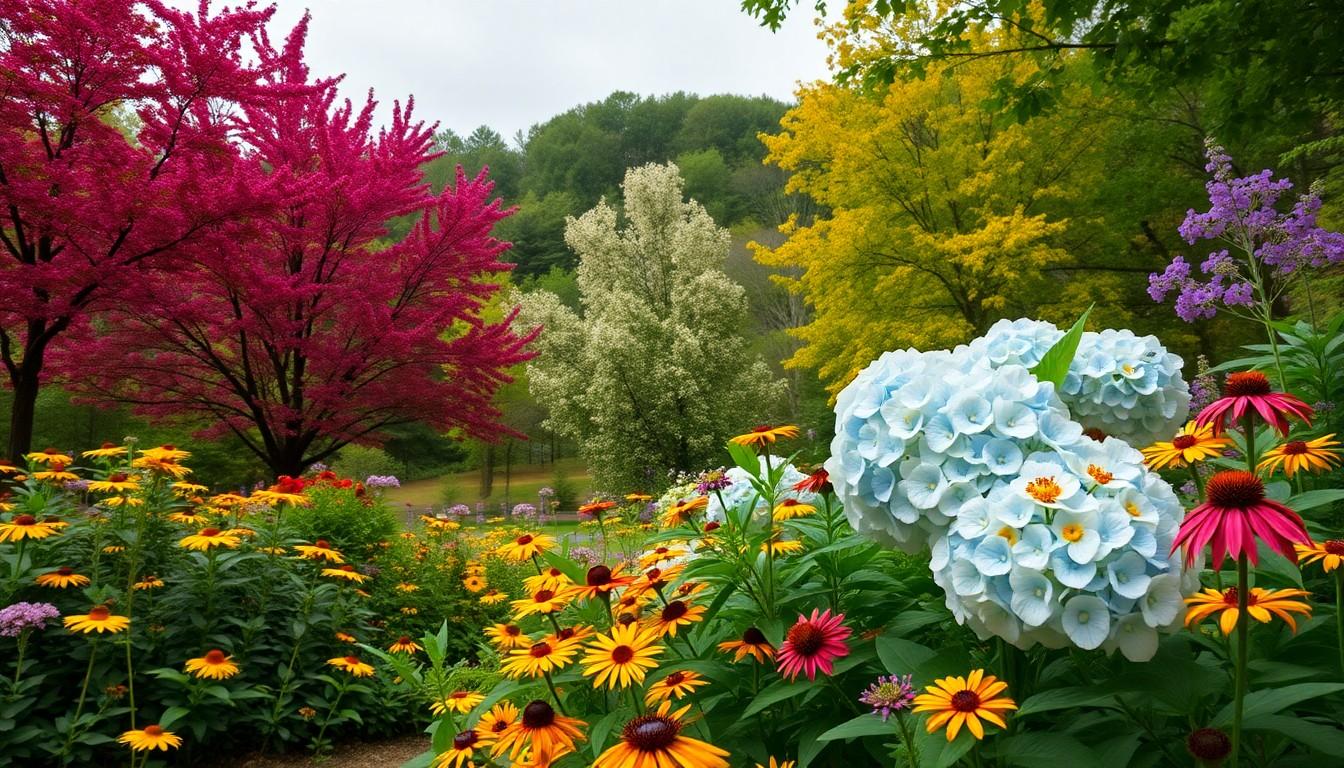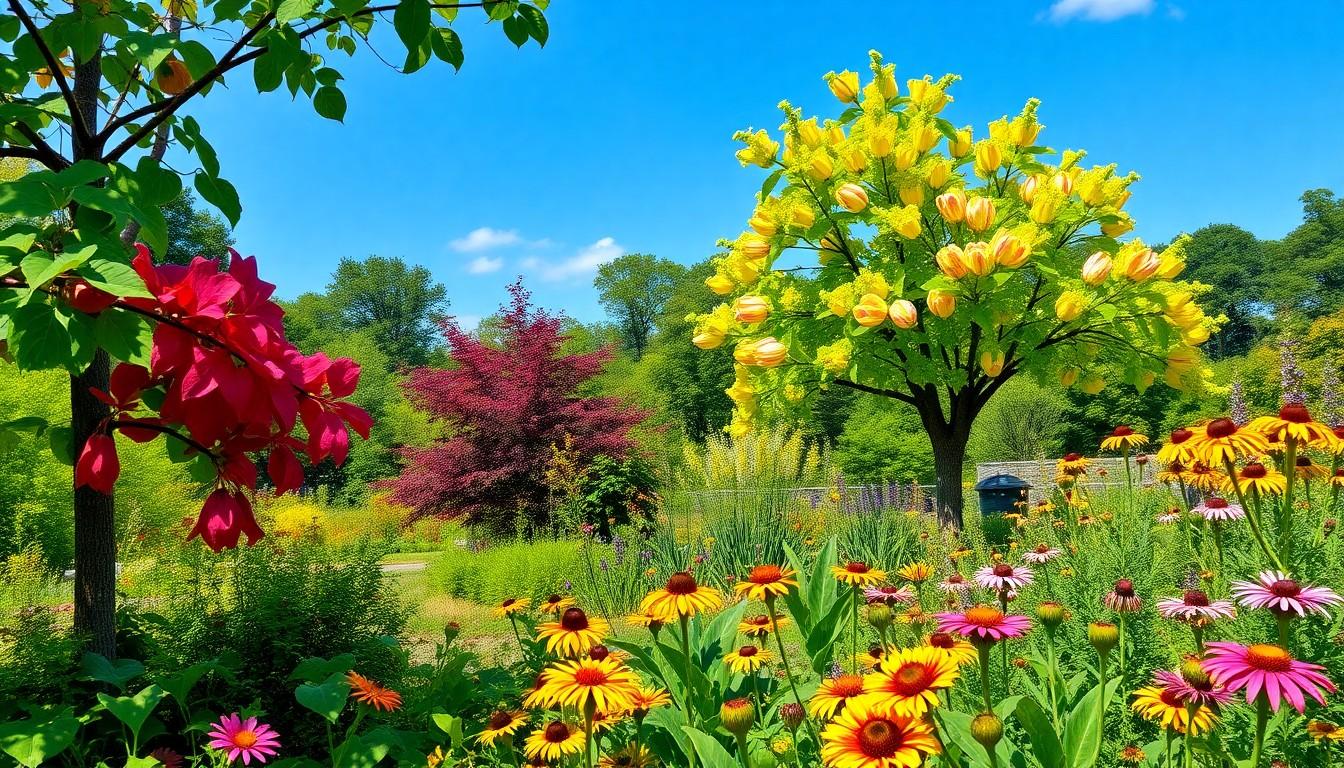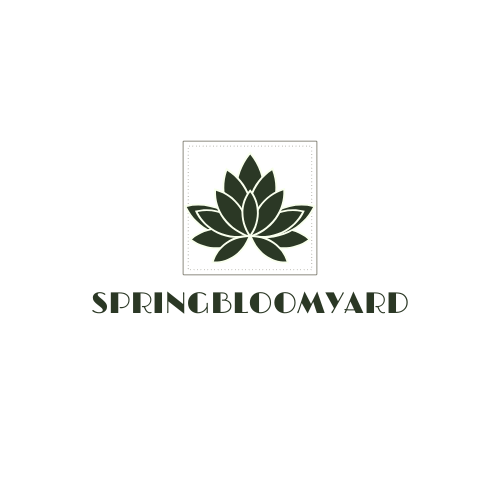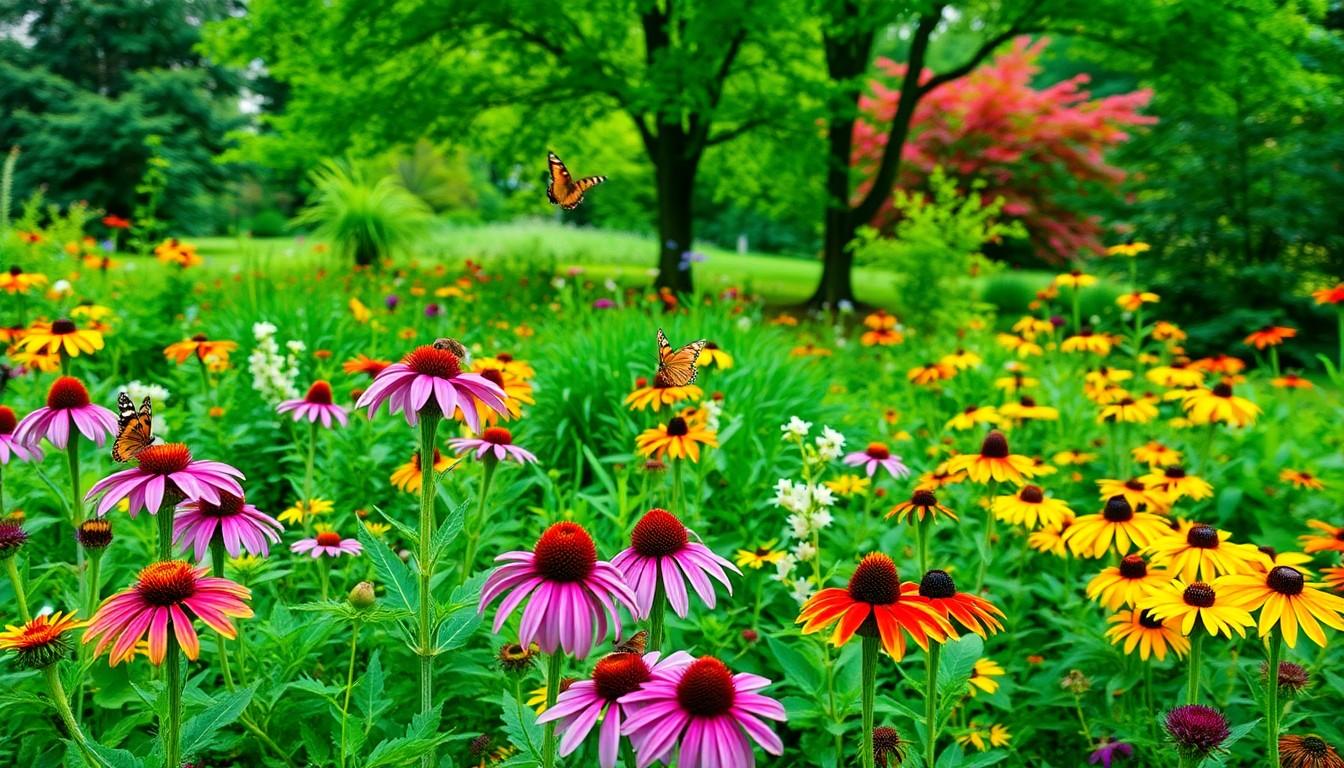When it comes to landscaping in Tennessee, why not let Mother Nature take the wheel? Native plants not only thrive in the Volunteer State’s unique climate but also save you from the dreaded chore of constant watering and fussing. Imagine a yard that’s as low-maintenance as your favorite pair of sweatpants—sounds dreamy, right?
Embracing native Tennessee plants means you’re not just adding beauty to your home; you’re also inviting local wildlife to join the party. Birds, bees, and butterflies will flock to your garden, turning it into a vibrant ecosystem. Plus, you’ll impress your neighbors with your eco-friendly choices while secretly basking in the glory of your effortless gardening skills. Who knew being a landscaping superstar could be this easy?
Benefits Of Native TN Plants For Landscaping
Utilizing native plants in landscaping offers numerous advantages that enhance both the environment and visual appeal. They thrive in Tennessee’s climate, providing significant benefits.
Environmental Benefits
Native plants contribute positively to local ecosystems. They require less water and maintenance compared to non-native species, promoting sustainability in gardening. Additionally, these plants foster biodiversity by attracting essential wildlife, including birds, butterflies, and beneficial insects. Pollination improves as native flowers and plants support local bee populations, which are crucial for food production. Soil health benefits from the deep root systems of native plants, preventing erosion and improving water absorption. Overall, their resilience against pests reduces the need for chemical treatments, creating a healthier environment for all.
Aesthetic Appeal
The beauty of native plants enhances landscaping significantly. Diverse colors and textures create stunning gardens that mirror Tennessee’s natural landscapes. Seasonal changes in appearance add dynamic interest throughout the year. Native plants also complement modern and traditional designs, making them versatile options for various aesthetic preferences. Their natural growth patterns contribute to a harmonious landscape, attracting admiration from neighbors and passersby. Incorporating local flora allows for unique garden designs that reflect regional identity. The low-maintenance nature of these plants ensures that gardens remain picturesque with minimal effort.
Popular Native TN Plants

Tennessee’s native plants offer beauty and ecological benefits, making them ideal for landscaping. Popular choices include trees, shrubs, and perennials, each adding unique attributes to gardens.
Trees
Species like the Eastern Redbud provide vibrant spring blossoms and heart-shaped leaves. The Tulip Poplar showcases large, tulip-shaped flowers and can reach up to 100 feet tall. Another great option is the Southern Red Oak, known for its sturdy structure and rich autumn colors. These trees support local wildlife by providing habitats and food sources, contributing to the state’s biodiversity.
Shrubs
The Oakleaf Hydrangea thrives in shady areas and produces striking white flower clusters. Similarly, the Spicebush offers fragrant yellow blooms in spring and attracts pollinators. Highbush Blueberry also stands out with its nutritious fruit and beautiful fall foliage. These shrubs enhance landscapes while offering food and shelter to various wildlife species, promoting a healthier ecosystem.
Perennials
Black-eyed Susans brighten gardens with their golden petals and easy maintenance. Coneflowers attract butterflies and withstand drought conditions, making them perfect for resilient landscapes. Native Wild Bergamot adds a splash of color and a pleasant fragrance, appealing to both gardeners and pollinators alike. These perennials contribute to diverse plant life, supporting wildlife and providing seasonal interest throughout the year.
Design Ideas Using Native TN Plants
Native plants offer versatile design options for landscaping that enhance both the aesthetic and ecological value of outdoor spaces. They create natural habitats, promote biodiversity, and add seasonal interest to gardens.

Creating Natural Habitats
Incorporating native plants fosters natural habitats that support local wildlife. Plants like Oakleaf Hydrangea and Spicebush attract birds and beneficial insects, creating thriving ecosystems. Designing layered gardens with different heights and densities encourages shelter for small mammals and nesting for birds. Additionally, clusters of perennials like Black-eyed Susans and Coneflowers deliver nectar for pollinators while providing visual interest. When strategically placed, native plants form a harmonious landscape that reflects the area’s natural beauty.
Seasonal Color Schemes
Seasonal color schemes contribute to dynamic garden design throughout the year. Early spring brings vibrant blooms from Eastern Redbuds, followed by the striking flowers of Tulip Poplar in late spring. Summer showcases colorful displays from Native Wild Bergamot and Coneflowers, attracting both eyes and pollinators. In fall, foliage from Southern Red Oak shifts to brilliant hues, offering visual warmth as temperatures cool. Incorporating plants with varying bloom times ensures continual color, texture, and ecological engagement throughout every season.
Maintenance Tips For Native TN Plants
Maintaining native plants in Tennessee ensures a thriving landscape.
Watering and Soil Requirements
Watering schedules vary based on the plant species. Deep watering encourages root development and resilience during dry periods. Soil types also influence care; native plants typically adapt well to local soil conditions. Well-draining soils support healthy growth and prevent root rot. Regular mulching retains moisture and suppresses weeds, benefiting both the plants and the ecosystem. Checking the moisture level before watering helps prevent over-saturation. Fertilizer usage remains minimal; native plants thrive in nutrient-balanced soils.
Invasive Species Management
Managing invasive species is vital for the health of native plant landscapes. Regular inspections help identify problematic species early. Hand-pulling or using appropriate tools keeps invasives in check without harming native plants. Introducing native rivals can effectively outcompete invasive varieties. Applying mulch creates a barrier to inhibit weed growth. Educating oneself about local invasive species fosters informed decisions. Monitoring the garden’s overall health ensures native species flourish while invasive threats remain under control.
Conclusion
Embracing native plants in Tennessee landscaping not only elevates the beauty of gardens but also fosters a thriving ecosystem. These plants are perfectly adapted to the local climate and soil, making them low-maintenance and sustainable choices. By choosing native species, gardeners can create vibrant spaces that attract beneficial wildlife while reducing their environmental footprint.
The diverse selection of native trees, shrubs, and perennials offers endless possibilities for creative designs that reflect the natural charm of Tennessee. Ultimately, incorporating native plants into landscaping is a step towards a healthier environment and a more sustainable future, benefiting both the gardener and the local ecosystem.

